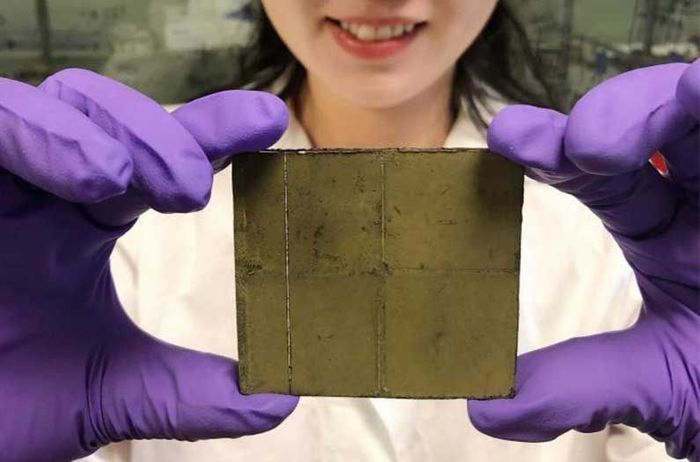Science you should know about in 2021
Grace Blackshaw, Sambhavi Sneha Kumar and Izavel Lee discuss some of the most important science stories to keep an eye out for this year

While the Covid-19 pandemic will likely continue to dominate headlines this year, other major scientific developments are also expected to take place in 2021.
Simonyi Survey Telescope
The James Webb Space Telescope will be launching to much fanfare later this year, but another important telescope is due to see “first light” in 2021 as well – the Simonyi Survey Telescope. Unlike the Webb telescope, which is an infrared telescope, the Simonyi telescope is an optical telescope, meaning that it mainly gathers visible light. Currently being built in Chile, the Simonyi telescope will conduct the 10-year Legacy Survey of Space and Time (LSST), which will provide astronomers with the data to answer a variety of questions on dark energy, asteroid trajectory, the formation of the Milky Way, and more. What’s unique about this telescope is that it contains a novel three-mirror design that will give it an “exceptionally” wide field of view, allowing it to survey the entire sky in just three nights. The survey will produce a huge amount of data – tens of terabytes every night, which will present a major challenge for data storage and processing.
New guidelines for stem cell research

The International Society for Stem Cell Research (ISSCR) announced in June last year that new guidelines for stem cell research will be released in early 2021. The revisions aim to address ethical issues surrounding embryo models, organoids, chimeras, genome editing, and cell therapy. The past year saw advancements in the creation of embryo models and brain organoids, and scientists have previously raised concerns about creating organoids that may become sentient or feel pain. New guidelines could help researchers win grants from state-funded institutions that may be reluctant to approve embryoid research. The new guidelines could also provide support for research that would require embryos older than 14 days, which is currently banned in many countries. The UK’s Human Fertilization and Embryology Act includes this rule, but it is unclear whether the law’s definition of an embryo will extend to embryoids as well.
An important year for the climate
Five years ago, representatives from 196 countries gathered in Le Bourget, near Paris, and voted to adopt the Paris Agreement. In doing so, the vast majority of the world committed to trying to limit global warming to 2°C (ideally 1.5°C) compared to pre-industrial levels by the end of the century. As things currently stand, we are not on track to do this. Fortunately, this isn’t the end of the story – under the terms of the Paris Agreement, countries agreed to come back every five years, review their targets and make them more ambitious. This was supposed to happen in Glasgow in November 2020 at the 26th UN Climate Change Conference of the Parties (COP26). However, due to the Covid-19 pandemic, this conference was postponed to November 2021. On a positive note, one notable attendee will be US President Joe Biden, who moved to reinstate the US in the Paris Agreement on his first day in the Oval Office. In other good climate news, China, the biggest carbon dioxide emitter globally, recently announced that they would be carbon neutral by 2060. Naturally, more still needs to be done, but initial indications suggest 2021 could be an important year for climate action.
Key steps towards nuclear fusion grid electricity

The Joint European Torus (JET), the world’s largest fusion reactor, is set to make important steps in its aim of generating considerable amounts of fusion power this year. Nuclear fusion has been the promising but elusive goal of many scientists since Arthur Eddington first suggested hydrogen-helium fusion could be the primary source of stellar energy in 1920. By the 1940s, scientists had already begun working on how to exploit the process for practical energy generation. In 1997, the JET got closer to this goal than anything before or since when it was fed a potent mix of the hydrogen isotopes deuterium and tritium (D-T), and produced 16MW of power for a few seconds. In 2021, following a recent update, the JET will use the same fuel mix for the first time since 1997. Scientists are optimistic that they will be able to produce similar levels of power but for a longer time. At the same time, ITER is currently under construction and is set to replace the JET as the largest fusion reactor in the world.
Smartphone connected pacemaker devices
As our lives begin to become progressively more dependent on technology, it is unsurprising that many treatment strategies in healthcare, including the management of pathologies related to the cardiovascular system, are continuously evolving. A pacemaker is a device fitted to maintain the normal contractile rhythm of the heart, for example in patients with arrhythmias or heart block – both of which can produce severely debilitating symptoms. However, despite being fitted in a significant number of patients (more than 40,000 people in England in 2010 alone had a new pacemaker fitted), there is a discontinuity between the device and the patient – for example, many may lack an understanding of how the device works. Bluetooth-enabled pacemakers aim to rectify this.
Used alongside a mobile application, these devices allow patients to access a greater range of data (such as pacemaker battery level, physical activity and general device information), which will likely help patients to feel more involved in their care and alleviate some anxiety or concerns they may have. Indeed, it has been demonstrated by one study that patients utilising a mobile app connected to their pacemaker were more likely to follow their recommended pacemaker monitoring schedule than those using traditional bedside monitors. Particularly as COVID-19 continues to place challenges on healthcare services, leading to increased reliance on digital delivery of care, the importance of patients correctly following self-monitoring schedules is crucial. Giving patients easier and more convenient access to their data via mobile apps may be of critical importance in the future.
 News / Cambridge academics stand out in King’s 2026 Honours List2 January 2026
News / Cambridge academics stand out in King’s 2026 Honours List2 January 2026 Interviews / You don’t need to peak at Cambridge, says Robin Harding31 December 2025
Interviews / You don’t need to peak at Cambridge, says Robin Harding31 December 2025 Comment / What happened to men at Cambridge?31 December 2025
Comment / What happened to men at Cambridge?31 December 2025 News / Varsity’s biggest stories of 202531 December 2025
News / Varsity’s biggest stories of 202531 December 2025 Features / “It’s a momentary expression of rage”: reforming democracy from Cambridge4 January 2026
Features / “It’s a momentary expression of rage”: reforming democracy from Cambridge4 January 2026










